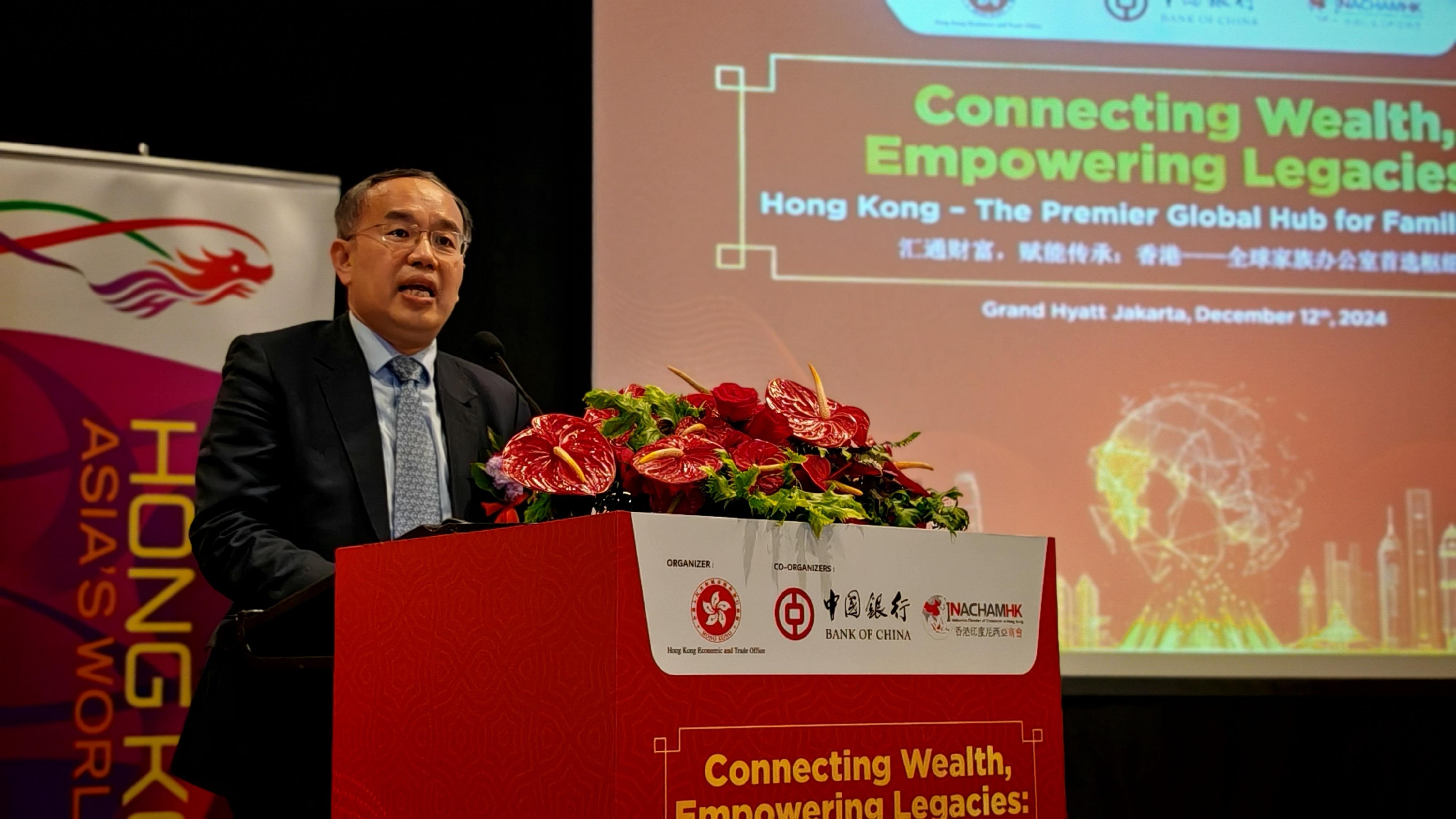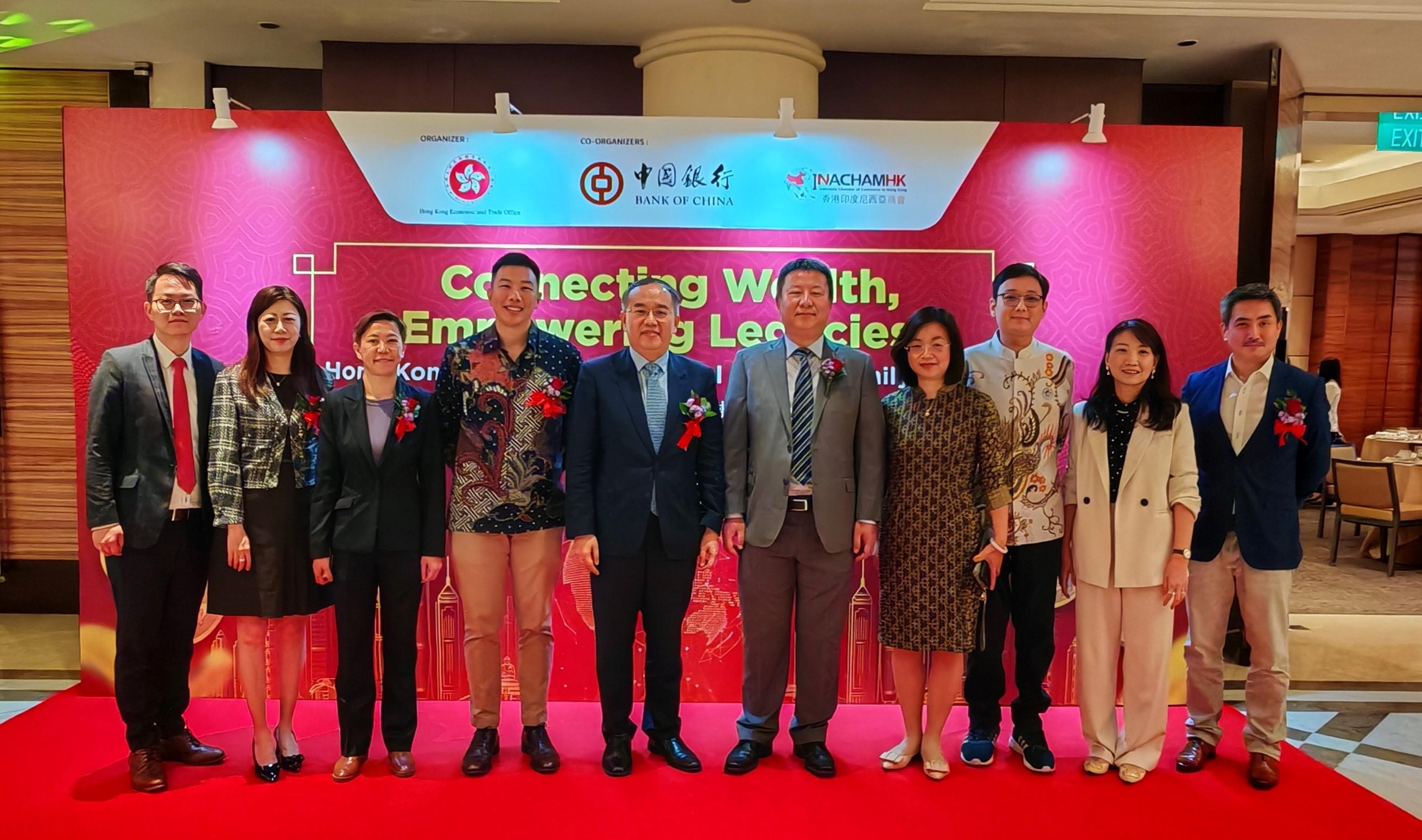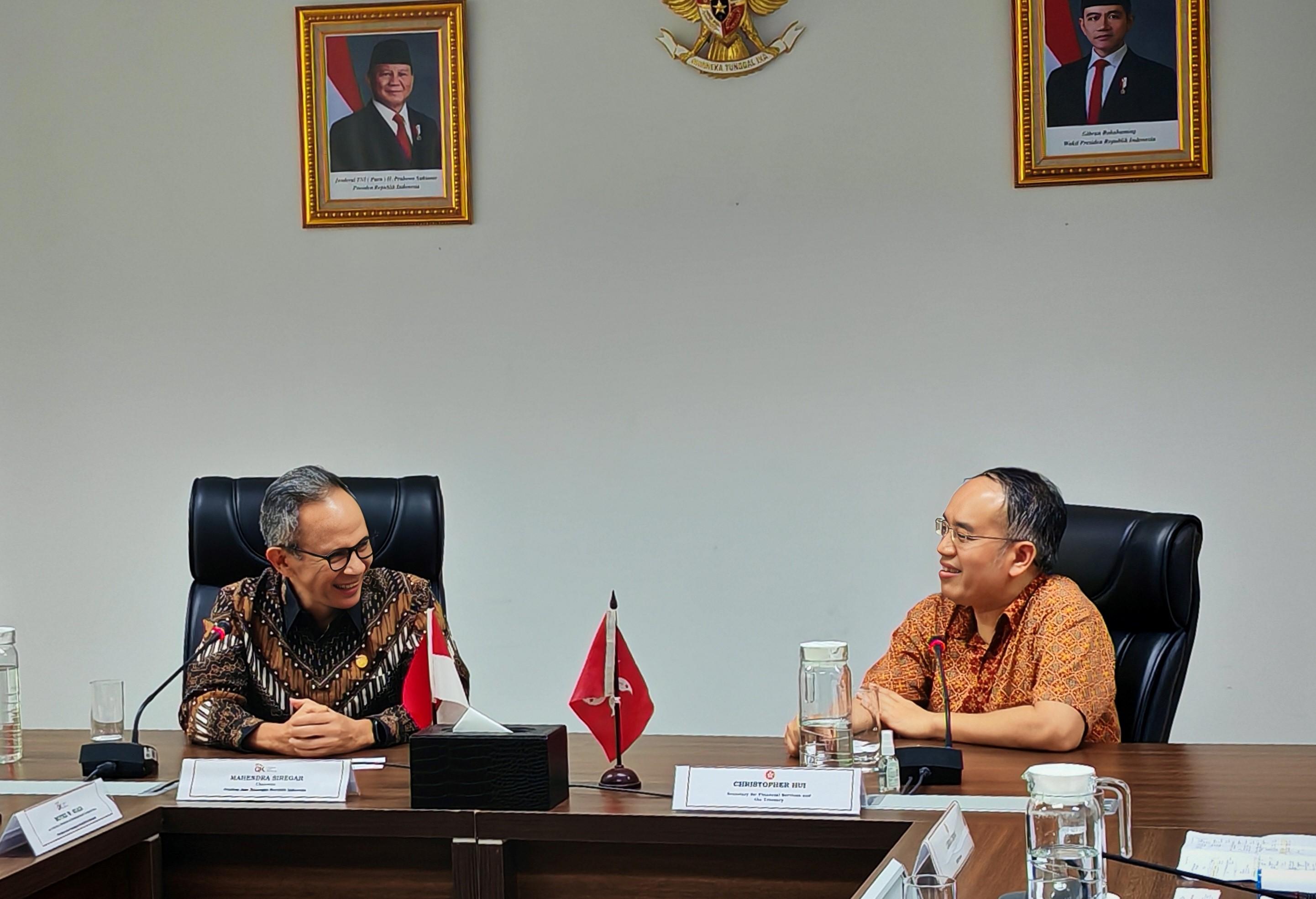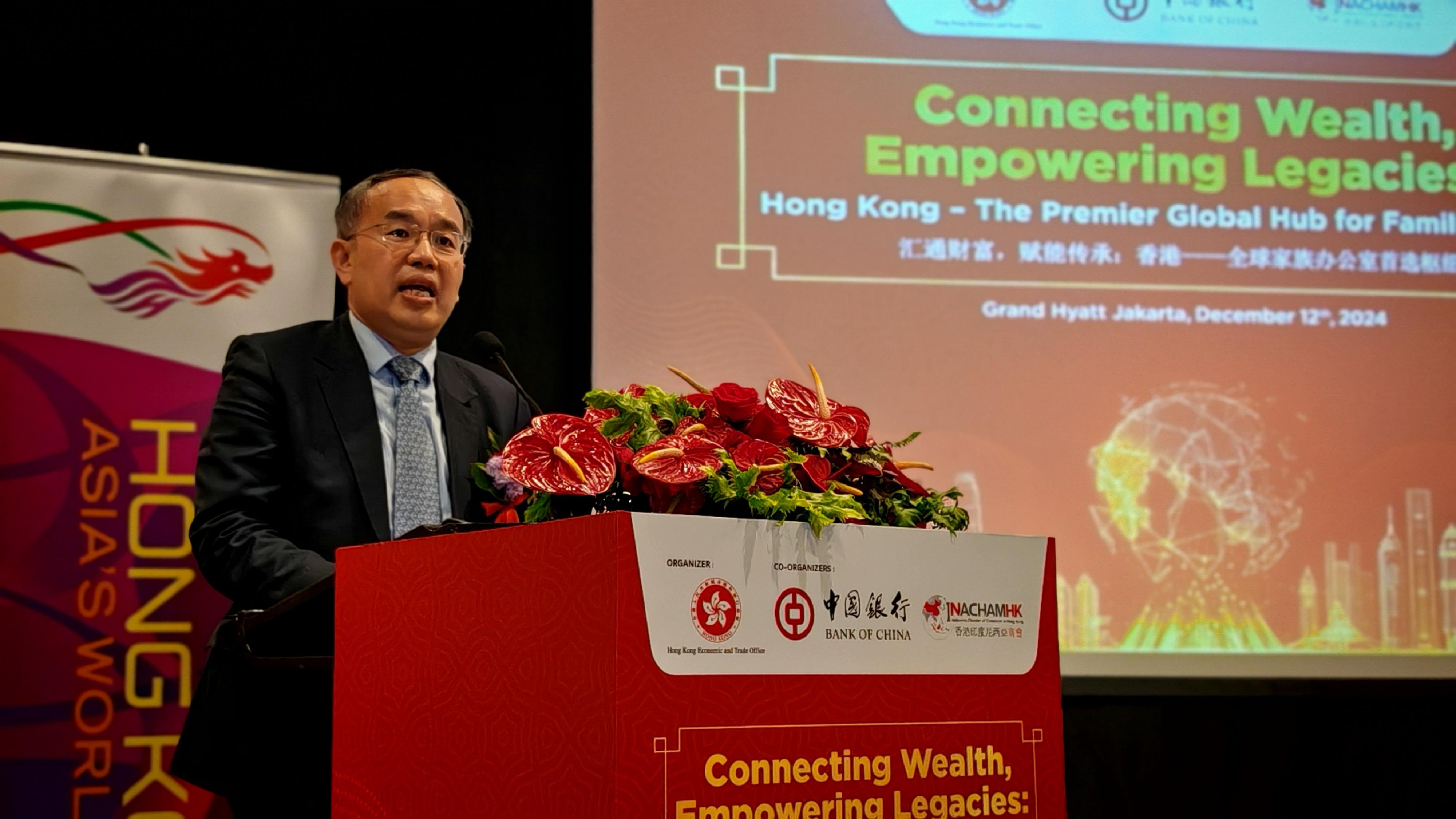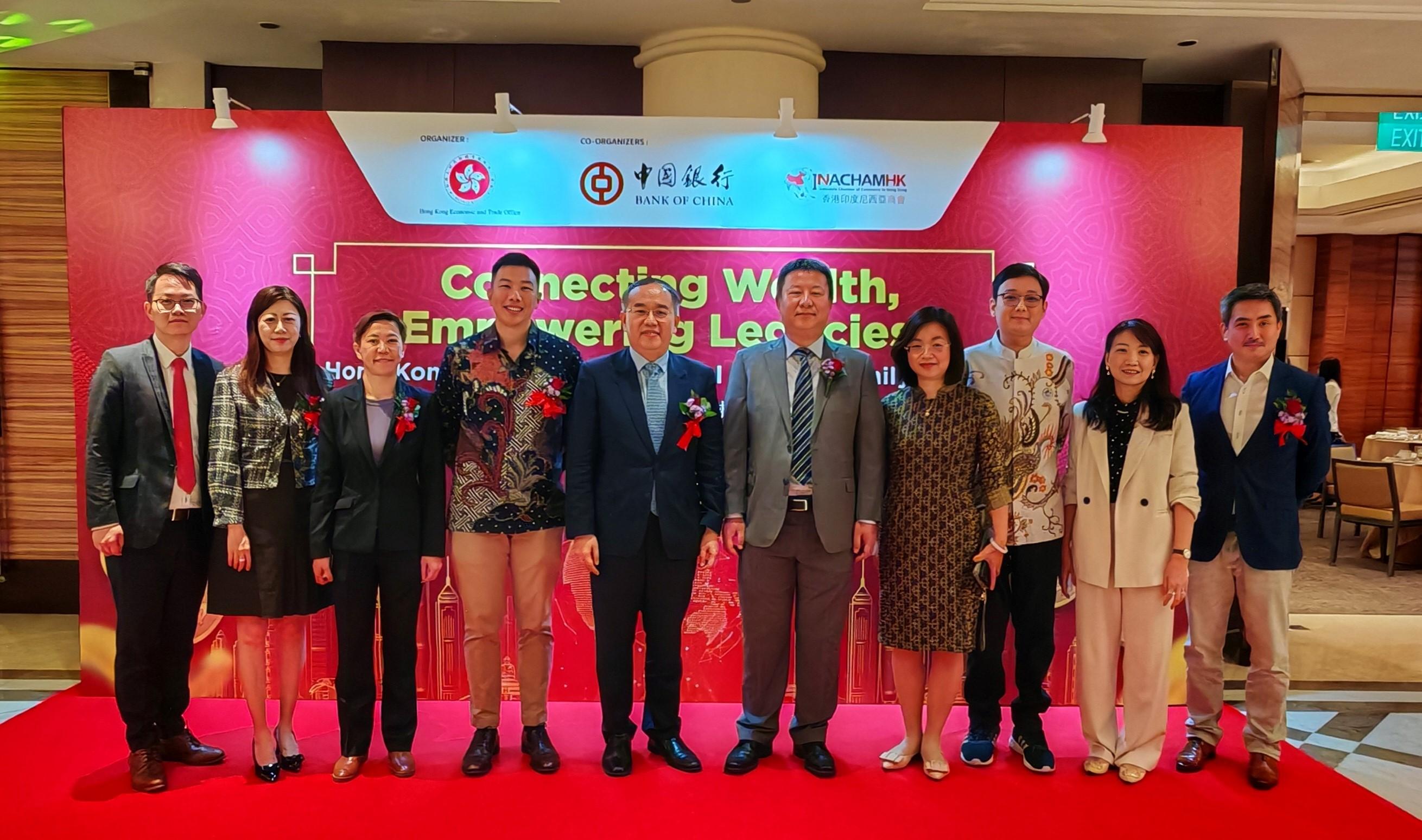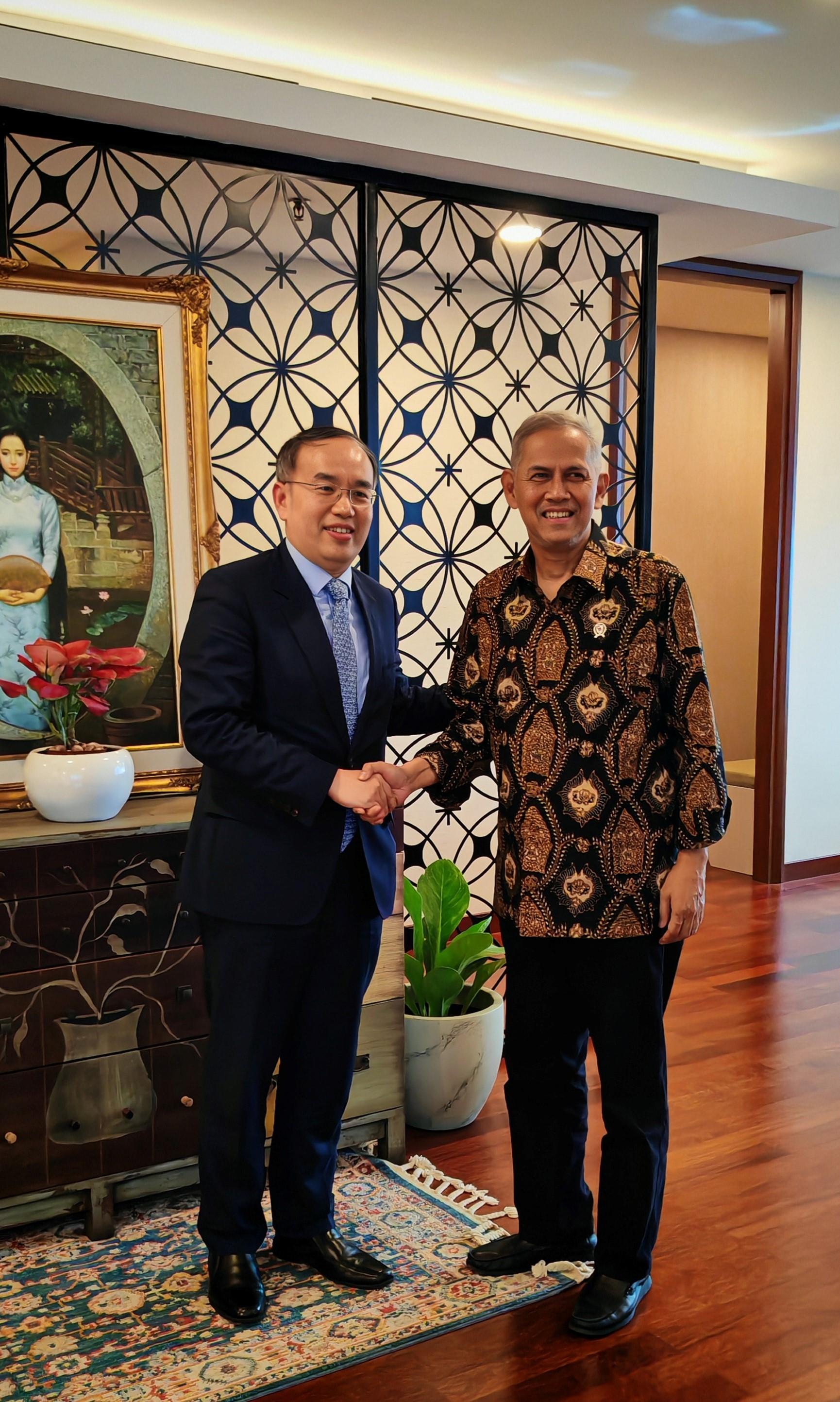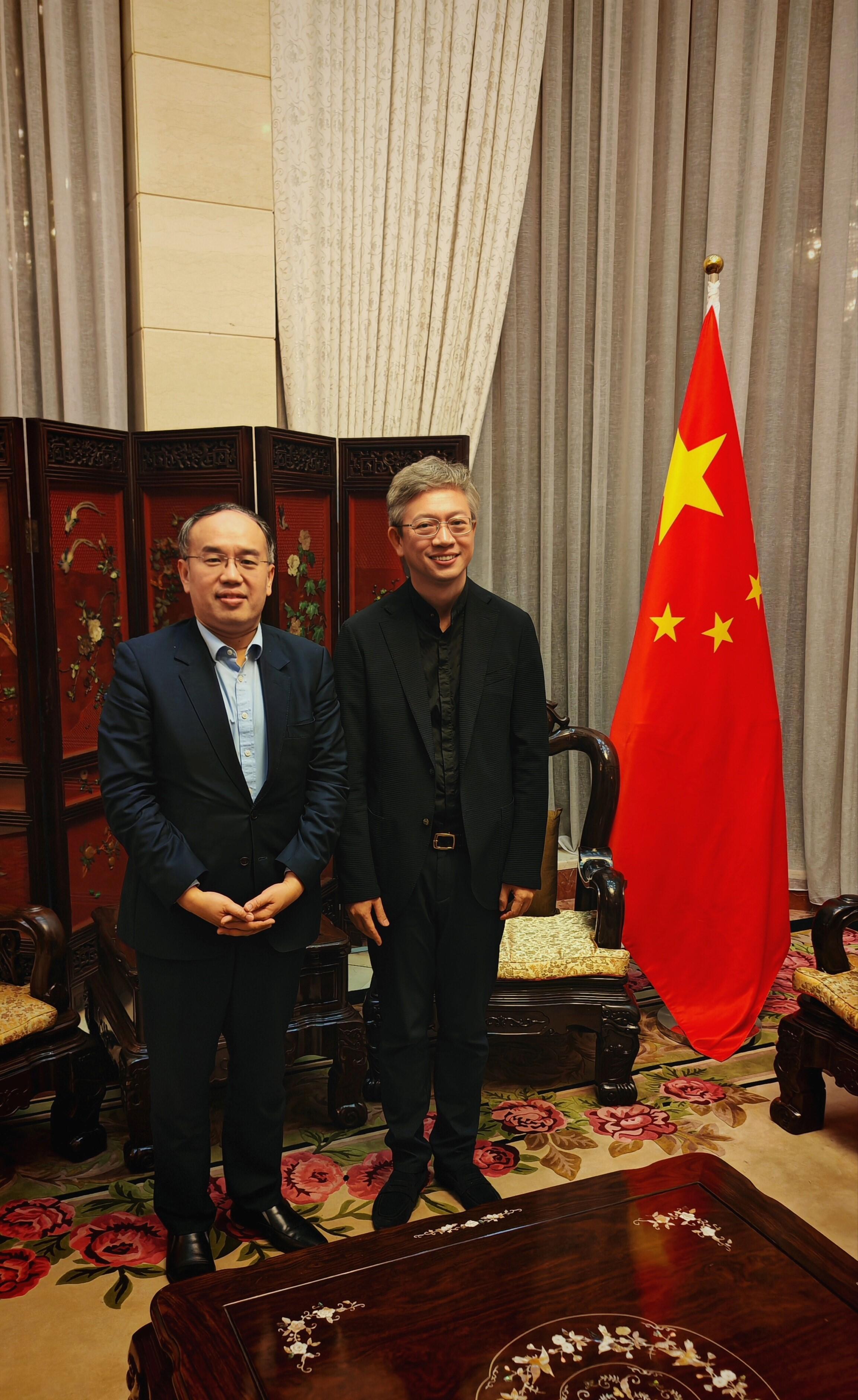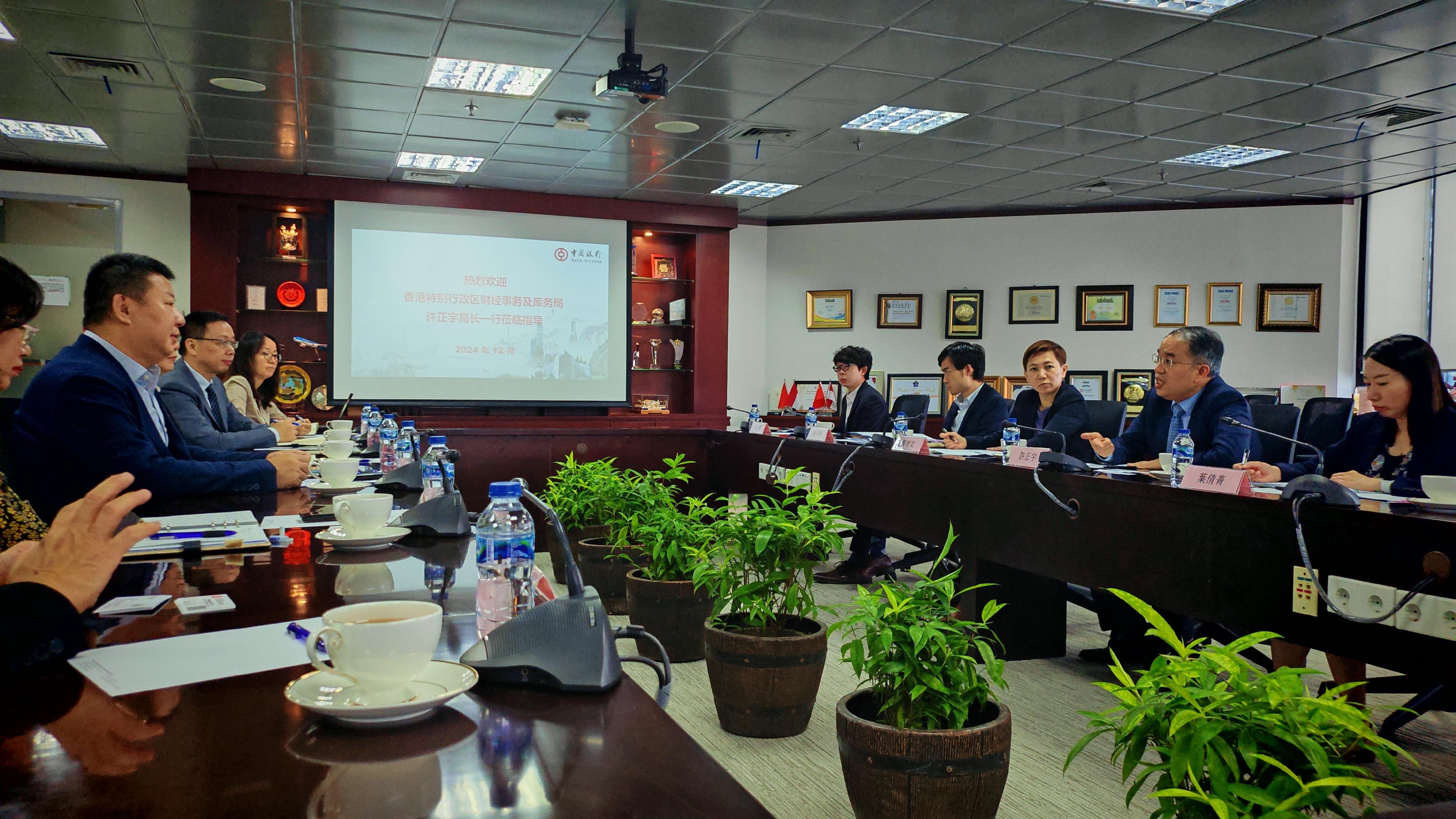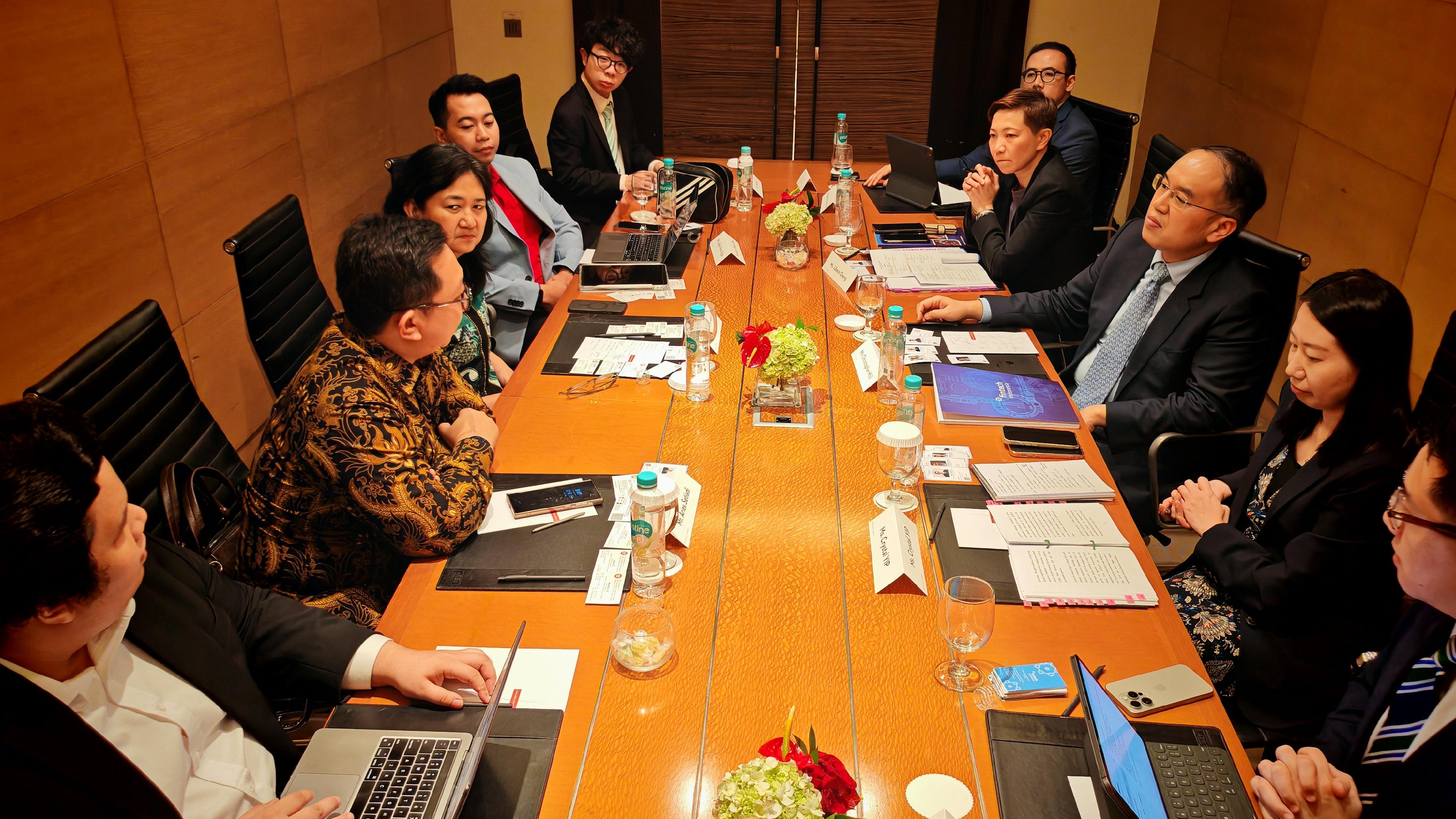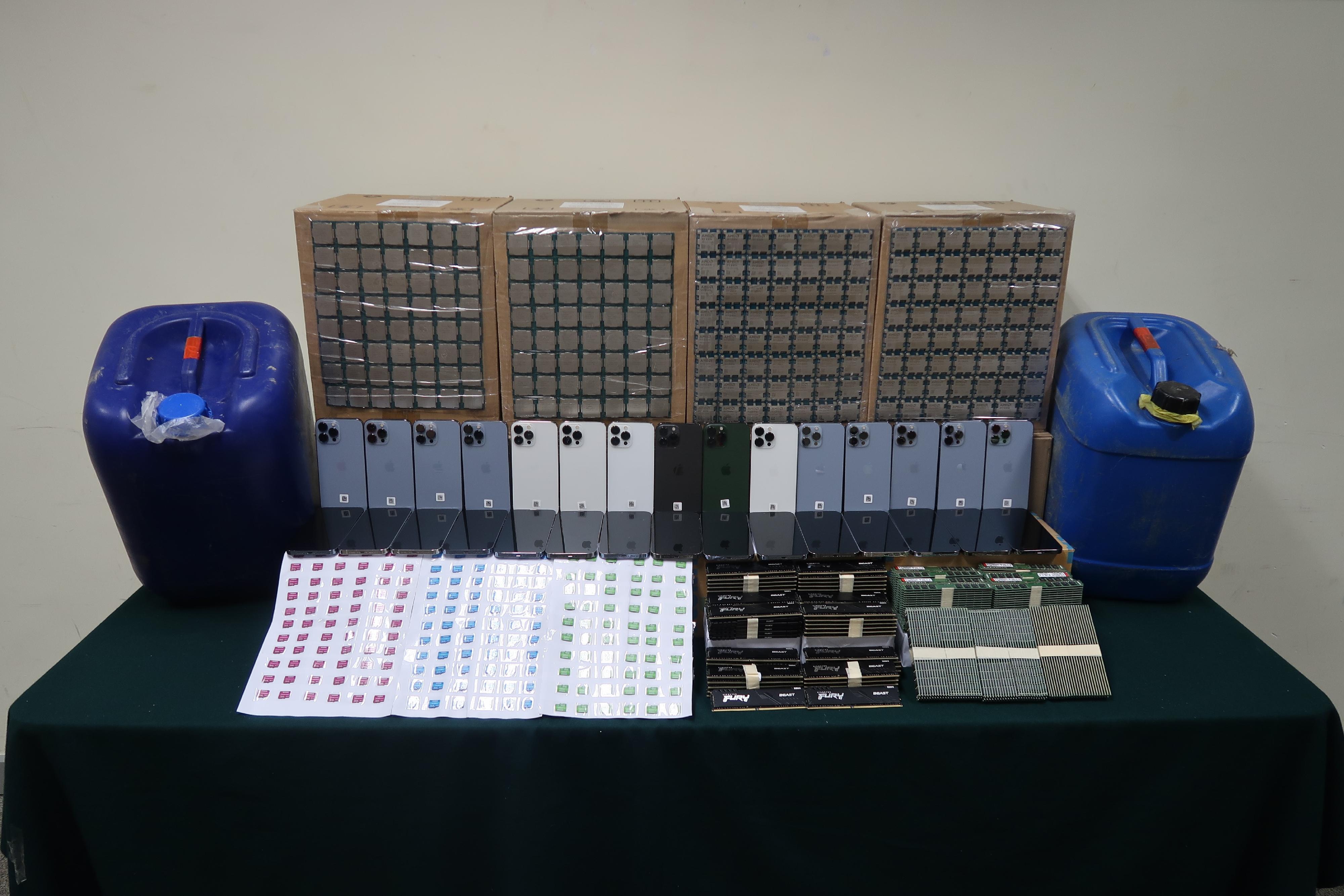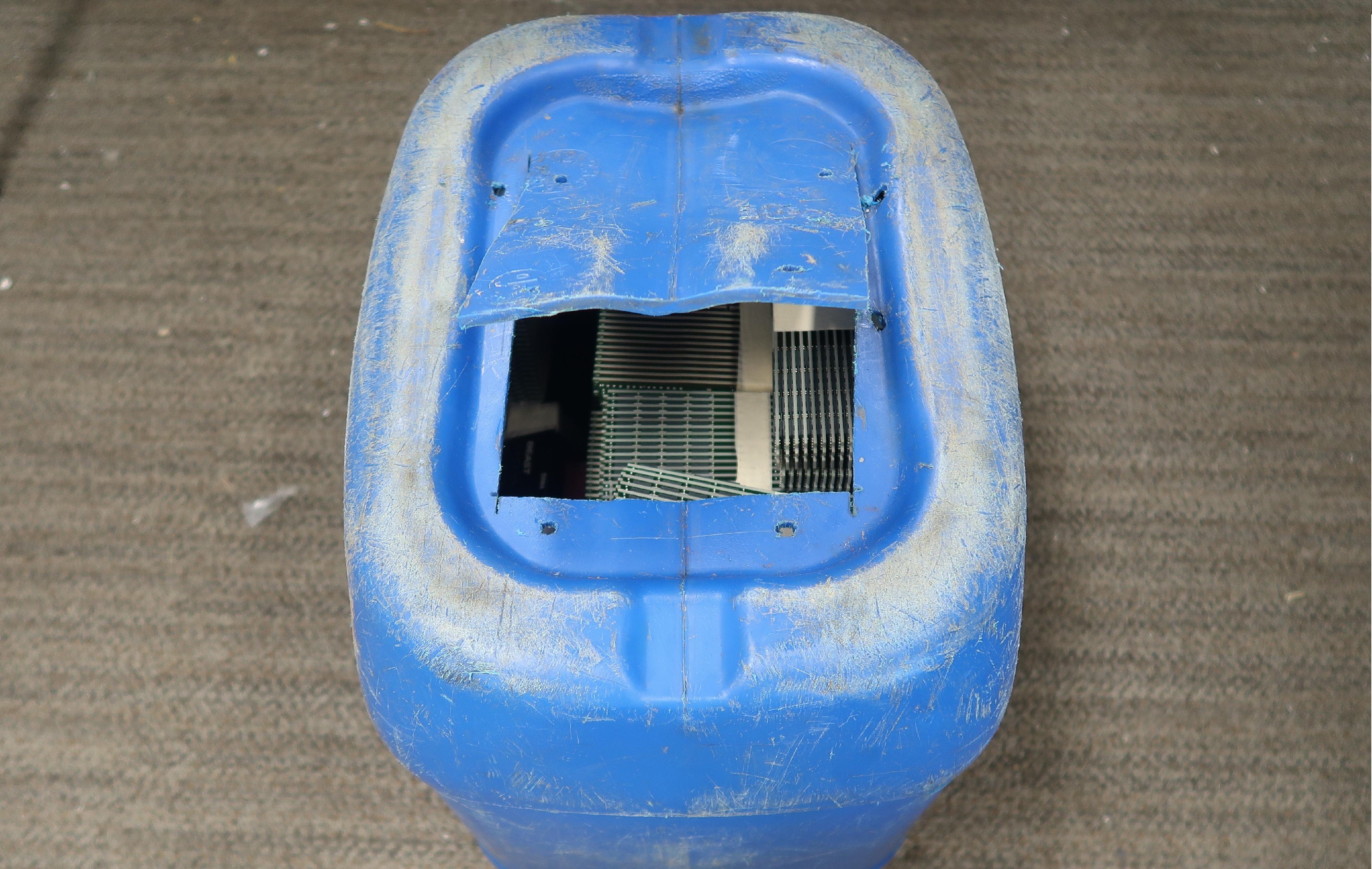SFST’s keynote speech at lunch seminar in Jakarta, Indonesia (English only) (with photos)
Following is a keynote speech by the Secretary for Financial Services and the Treasury, Mr Christopher Hui, at a lunch seminar themed "Connecting Wealth, Empowering Legacies: Hong Kong – The Premier Global Hub for Family Offices" held in Jakarta, Indonesia, yesterday (December 12):
Mr Sun (Country Manager of Bank of China (Hong Kong) Limited Jakarta Branch, Mr Sun Shangbin), Mr Chan (Vice President of Indonesia Chamber of Commerce in Hong Kong, Mr Brian Chan), distinguished guests, ladies and gentlemen,
Good afternoon. I am pleased to join you all at the lunch seminar today and share with you the Hong Kong Government's strategies to augment our position as a family office hub, and what we have to offer to achieve your families' aspirations.
Overview
The global growth of family offices is evident, with Asia emerging as both a source of family offices and a destination of their investments. In this connection, Hong Kong is best poised to offer a global investment platform to capture these business opportunities. We are the third in the world, after New York and London, in the latest Global Financial Centres Index. We are also the world's freest economy, with free flow of capital, goods, information and people. On asset and wealth management, we are Asia's leading hub managing US$4 trillion in terms of worth of assets last year. Net fund inflows into Hong Kong has reached US$50 billion, representing a substantial rise by over 3.4 times year on year. The industry also estimates that Hong Kong will surpass Switzerland to become the world's largest cross-border wealth management centre in the next few years.
Currently in Hong Kong, we have the highest number of ultra-high-net-worth individuals of any Asian city. We are home to some 2 700 single family offices, and we will further our efforts in attracting more, bringing in increasing volume of capital, talent and business opportunities, and of course from Indonesia as well. And today, I know I am right before your lunch, so I will try to make my speech as short as possible and, at the same time, I want to make it as memorable as possible. In such a way, I would like to share with you four Ts in terms of what Hong Kong can offer to give you a clearer understanding of Hong Kong as a global investment centre and also family office hub.
Ties with Mainland and global capital markets
First of all, the first T is about our ties with the Mainland and also the global capital markets. We are in strong ties with the Mainland, enabling Hong Kong to be the only city where both the global and China advantages converge. Hong Kong's core advantage, our "one country, two systems" principle, is the very bedrock of our continuing success, empowering us to be a "super connector" and "super value-adder" in the high-quality opening up of the Mainland's financial markets, and providing you and your family offices with unparalleled investment opportunities.
This year marks the 10th anniversary of mutual access between the Mainland and Hong Kong capital markets, a shining beacon of the unparalleled connectivity that we enjoy. Over the decade, a variety of programmes, from Stock Connect and Bond Connect to Swap Connect, have been introduced one after another, with gratifying results. The average daily Northbound turnover of Stock Connect, which means international money going through Hong Kong into the Mainland capital markets, for example, has surged from less than RMB6 billion when it was launched in 2014, that is 10 years ago, to an average of more than RMB136 billion as of October this year – an increase of 23 times.
What's more, Hong Kong has long been the largest offshore Renminbi hub in the world. As of October this year, we hold more than 1.1 trillion in Renminbi deposits and process about 80 per cent of the global offshore Renminbi payments.
Tax environment
Moving on to the next T, which is about tax, I am sure all of you are very concerned. The favourable tax environment in Hong Kong is that we have a very simple and also a very low tax regime. We have no sales taxes, no value-added taxes, no capital gains taxes, no estate duties, no taxes on dividends or interest earned, and also no withholding taxes on investments. That is a lot of no tax, ladies and gentlemen. Of course sometimes I am just wondering how I got paid with such low taxes. But anyway, it is what it is now and what is going to be going forward.
Currently, we offer profits tax exemption for single family offices managed in Hong Kong. With a view to attracting more family offices to Hong Kong, we will further enhance our tax exemption regime for single family offices, and we have just launched an industry consultation on the proposed enhancements. Among others, we are looking into expanding the types of eligible transactions to cover emission derivatives or emission allowances, carbon credits, insurance-linked securities, loans and private credit investments, virtual assets, etc, in our tax exemption regime for family offices.
Talent
The third T that I would like to cover is about talent. Apart from tax incentives, the third T, which is talent, demonstrates our strong emphasis on attracting and nurturing talent. For talent and asset owners wishing to reside and pursue development in Hong Kong, our New Capital Investment Entrant Scheme launched in March this year has received around 700 applications, potentially bringing in capital of over HK$21 billion. We have recently enhanced the Scheme by allowing investments in eligible residential properties apart from commercial properties. In addition, investments made through an eligible private company wholly owned by an applicant will also be allowed with effect from March 1 next year and be considered as eligible assets.
On nurturing talent, last year, we established the Hong Kong Academy for Wealth Legacy. It offers next-generation wealth owners and private wealth-management professionals knowledge sharing, talent development and, most importantly, networking opportunities via workshops, conferences and related events. What we seek to do is to provide a programme on succession planning and impact investment for our second and also third generations of the family offices.
Tailored initiatives for family offices
The final T is about tailored initiatives for family offices, which involve collaboration and services for our family offices. Various financial mega events are held throughout the year in Hong Kong, and the Wealth for Good in Hong Kong Summit is our annual signature event bringing together influential decision-makers from global family offices to explore themes capturing critical priorities faced by family offices including wealth preservation and succession. Please stay tuned for the details of the third edition to be held next March, following which there will also be Art Basel and many investment related events, which you are most welcome to join.
Building on the above-mentioned success, we have recently announced the establishment of a strategic collaboration with Bloomberg to enhance our appeal to family offices worldwide. The partnership with Bloomberg, focusing on community building, technology support and philanthropic collaboration, is designed to complement our family office initiatives.
Invest Hong Kong's dedicated family office team, let me add, will continue to provide one-stop services to family offices interested in establishing a presence in Hong Kong. To date, the team has received more than 900 enquiries from interested family offices around the world. And they are standing by to help with your family office needs. You are most welcome to contact the team through the Hong Kong Economic and Trade Office in Jakarta if you are looking to set foot in Hong Kong.
Closing
Ladies and gentlemen, as you can see, we are committed to bolstering the development of the family office sector and creating a conducive environment for investors like you. I invite you to join us, to take advantage of the far-reaching opportunities Hong Kong can offer your families, your family businesses and also your other members, for today and also for tomorrow. Thank you.
